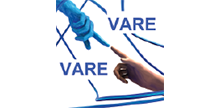VR-technology for risk assessment of and accident prevention at machine tools
- a,b,c Institute for Machine Tools and Production Processes, Chemnitz University of Technology, Reichenhainer Str. 70,
09126 Chemnitz, Germany - d Department of Personality Psychology and Psychological Assessment, University of Bamberg, An der Weberei 5N,
96047 Bamberg, Germany
Cite as
P. Puschmann, F. Klimant, V. Wittstock, A. Schütz (2018). VR-technology for risk assessment of and accident prevention at machine tools. Proceedings of the 4th International Conference of The Virtual And Augmented Reality In Education (VARE 2018), pp. 18-22. DOI: https://doi.org/10.46354/i3m.2018.vare.003
Abstract
Using Virtual Reality (VR) could allow for a more structured and comprehensive risk assessment (RA) of machines and equipment at an early stage of the machine development process (design phase). Before developing a new method for VR-based RA, it is, however, necessary to first determine if VR is feasible and useful in carrying out risk assessments.
For this purpose we initiated two user studies. In the first study, a column type drilling machine was investigated to evaluate the general usability of VR for RA. In the second study, the modality of information transfer was investigated. A conventional form of safety instruction (SI) was compared with a VR-SI. The results
showed that the VR-RA is generally feasible, so we started to develop a VR-RA method. This paper presents the implementation and results of the two studies, the current status of the VR-RA method and the next steps to be taken.
References
- Azuma, R., 1997. A Survey of Augmented Reality. Presence 6: 355–385.
- Baratali E., Abd.Rahim M.H.B, Parhizkar B., Gebril Z.M., 2016. Effective Of Augmented Reality (AR) In Marketing Communication; A Case Study On Brand Interactive Advertising, International Journal of Management and Applied Science (IJMAS), Volume 2, Number 4: pp. 133-137
- Bourne J., 2016, First government-backed VR alliance launches in Beijing, Available from: https://www.virtualreality-news.net/ [accessed 13 March 2018].
- Caudell T. P. and Mizell D. W., 1992. Augmented reality: an application of heads-up display technology to manual manufacturing processes. Proceedings of the 25th Hawaii International Conference on System Sciences, volume 2, pp. 659–669. January 7-10, Kauai (HI, USA)
- Dünser A., Walker L., Horner H., Bentall D., 2012. Creating interactive physics education books with augmented reality. Proceedings of the 24th Australian Computer-Human Interaction Conference (OzCHI), pp. 107-114. November 26- 30, Melbourne (VIC, Australia).
- French Ministry of National Education, 2015.The Official Bulletin of National Education publishes administrative acts. Available from: http://www.education.gouv.fr/ [accessed 13 March 2018].
- Gillet A., Sanner M.F., Stoffler D., Goodsell D.S., Olson A.J., 2004. Augmented reality with tangible auto-fabricated models for molecular biology applications. Proceedings of the 10th IEEE Visualization conference, pp. 235-241. October 10-15, Austin (Texas, USA)
- Kaufmann H., Meyer B., 2008. Simulating educational physical experiments in augmented reality. Proceedings of 1st ACM SIGGRAPH Asia, p 8. December 10-13, Singapore.
- Le H., Kim J., 2017. An augmented reality application with hand gestures for learning 3D geometry. Proceedings of the 4th International Conference on Big Data and Smart Computing (BigComp), pp. 34-41. Februrary 13-16, JeJu Island (Korea).
- Lee S., Yoon H. S., Park J., Chung Y.S., Hong J., Yi B.J., 2015. A Surgical Navigation and Endoscope Holder Integrated System for Sinus Surgery. Proceedings of the 11th Asian Conference on Computer Aided Surgery. July 9-11, Singapore.
- Liao Y., Yu C., Wu C., 2015. Learning Geometry with Augmented Reality to Enhance Spatial Ability. Proceedings of the 3rd International Conference on Learning and Teaching in Computing and Engineering, pp. 221-222. April 9-12, Taipei (Taiwan).
- Maier P., Klinker G., 2013. Augmented chemical reactions: An augmented reality tool to support chemistry teaching. Proceedings of the 2nd Experiment@ International Conference, pp. 164- 165. September 18-20, Coimbra (Portugal).
- Mitrasinovic S., Camacho E.J., Trivedi N., Logan J., Campbell C., Zilinyi R., Lieber B.A., Bruce E., Taylor B.W., Martineau D., Dumon E.L., Appelboom G., Connolly E.S., 2015. Clinical and surgical applications of smart glasses. Technology and health care : official journal of the European Society for Engineering and Medicine, Volume 23 Number 4: pp. 381-401.
- Oh C.J., 2017, KoVAC virtual reality center opens up in Seoul, Available from: http://pulsenews.co.kr/ [accessed 13 March 2018].
- Rashed E.A., and El-Seoud S.A., 2017. An interactive augmented reality imaging system for minimally invasive orthopedic surgery. Proceedings of the 2nd International Conference on Knowledge Engineering and Applications, pp. 138-141. October 21-23, London (UK).
- Somsak T., Prachyanun N., 2015.Using Augmented Reality for Teaching Physics. Proceedings of the 6th TCU International e-Learning Conference, pp. 282-287, July 20-21, Bangkok (Thailand).
- Touel S., Mekkadem M., Kenoui M., and Benbelkacem S., 2017. Collocated learning experience within collaborative augmented environment (anatomy course), Proceedings of the 5th International Conference on Electrical Engineering - Boumerdes (ICEE-B), pp. 1-5, October 29-31, Boumerdes (Algeria).
- U.S. Department of Education, 2016. U.S. Department of Education Launches $680,000 Challenge for Virtual and Augmented Reality Learning Experiences. Available from: https://www.ed.gov/news [accessed 13 March 2018].
- Yazdanifard R. and Jin O, 2015. The Review of the Effectivity of the Augmented Reality Experiential Marketing Tool in Customer Engagement. Global Journal of Management and Business Research: EMarketing(GJMBR ) Volume 15 Number 8: pp 13-17.
- Zhou, F., Duh, H.B., and Billinghurst M., 2008. Trends in augmented reality tracking, interaction and display: A review of ten years of ISMAR. Proceedings of 7th IEEE/ACM International Symposium on Mixed and Augmented Reality, pp 193-202. September 18-18, Cambridge (UK).
